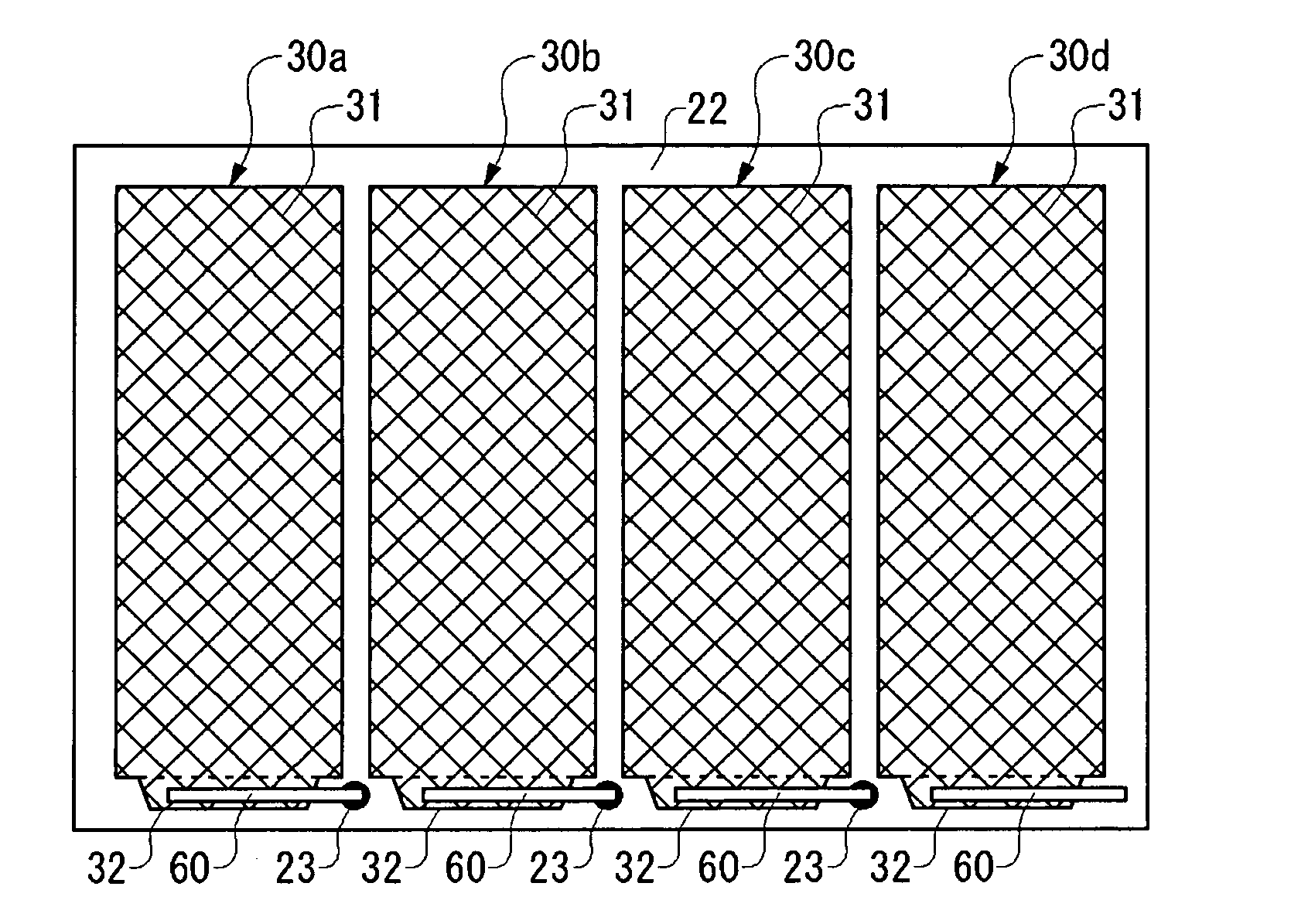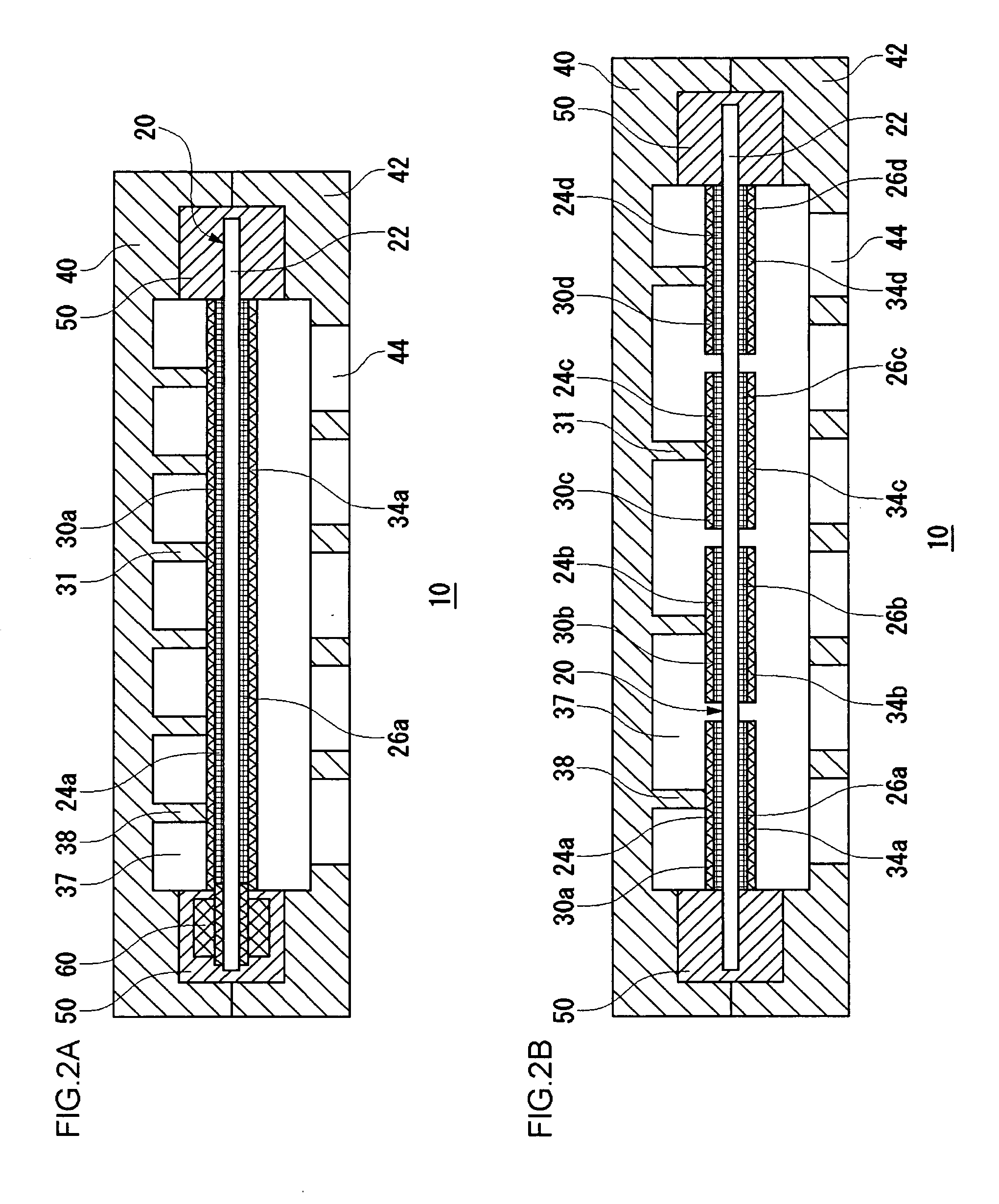Fuel cell and method for connecting current connectors thereto
- Summary
- Abstract
- Description
- Claims
- Application Information
AI Technical Summary
Benefits of technology
Problems solved by technology
Method used
Image
Examples
Embodiment Construction
[0030]The invention will now be described by reference to the preferred embodiments. This does not intend to limit the scope of the present invention, but to exemplify the invention.
[0031]Hereinbelow, the embodiments will be described with reference to the accompanying drawings.
[0032]FIG. 1 is an exploded perspective view showing a structure of a fuel cell 10 according to an embodiment of the present invention. FIG. 2A and FIG. 2B are cross-sectional views taken along line A-A′ and the line B-B′ of FIG. 1, respectively. As illustrated in FIG. 1 and FIGS. 2A and 2B, the fuel cell 10 includes a membrane electrode assembly (MEA, also called a catalyst coated membrane (CCM)) 20, an anode housing 40, and a cathode housing 42. A sealing member 50 to be described later is provided around the peripheral edge part of the membrane electrode assembly 20.
[0033]The membrane electrode assembly 20 includes an electrolyte membrane 22, anodes 24a to 24d, and cathodes 26a to 26d, which are disposed c...
PUM
| Property | Measurement | Unit |
|---|---|---|
| Width | aaaaa | aaaaa |
Abstract
Description
Claims
Application Information
 Login to View More
Login to View More - R&D
- Intellectual Property
- Life Sciences
- Materials
- Tech Scout
- Unparalleled Data Quality
- Higher Quality Content
- 60% Fewer Hallucinations
Browse by: Latest US Patents, China's latest patents, Technical Efficacy Thesaurus, Application Domain, Technology Topic, Popular Technical Reports.
© 2025 PatSnap. All rights reserved.Legal|Privacy policy|Modern Slavery Act Transparency Statement|Sitemap|About US| Contact US: help@patsnap.com



